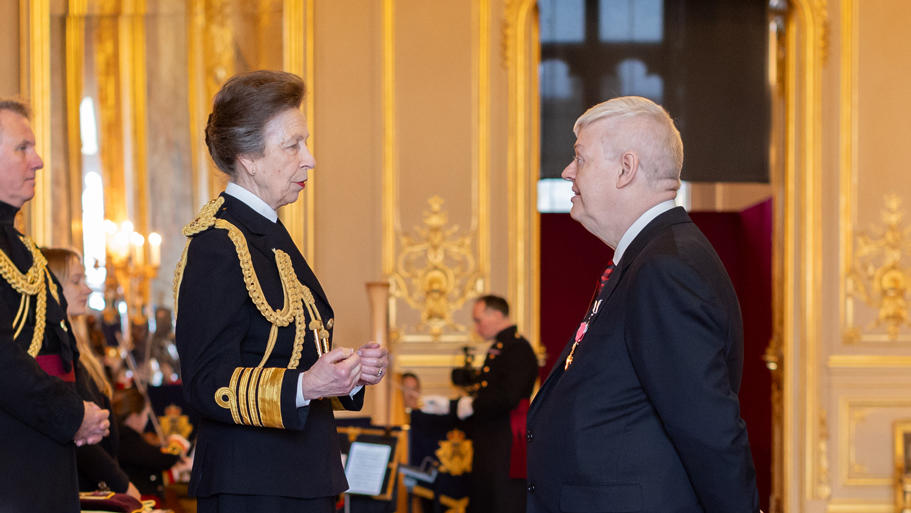Remember This? Women’s Memorial Building
Posted Dec 21, 2020 02:27:00 PM.
OttawaMatters.com, in partnership with the Historical Society of Ottawa, brings you this weekly feature by Director James Powell, highlighting a moment in the city's history.
December 21, 1925
Imitations received mid-September, 1925, that the Liberal government of William Lyon Mackenzie King had informally agreed to provide a plot of land for a proposed Women’s Memorial Building must have been greeted with considerable satisfaction by Mrs. Asa Gordon (Her first name was Amelia, but she was always known as Mrs. Asa Gordon).
In her late 70s, Mrs. Gordon had spent a lifetime in service, toiling for the great causes of the day, especially temperance and women’s suffrage.
At one time, she was the Dominion President of the Women’s Christian Temperance Union as well as the Dominion President of the King’s Own Daughters, an international Christian service group. She had also been a founding member of the Ottawa Women’s Club organized in 1914.
Another cause dear to her heart was the erection of a memorial that would recognize the contribution of women to Canadian society, and their service through the Great War. She and the Ottawa Women’s Club had approached the government the previous January and had lobbied hard for funding. An Order-in-Council dated December 21, 1925, made official the government’s offer of land for the memorial.
The site for the proposed building was immediately to the south of the Dominion Archives building, between Sussex Street and Lady Grey Drive, close to Nepean Point Park.
It would have been difficult to find a more prestigious location.
The government also drafted architectural plans for the proposed four-storey edifice that would conform with the nearby neo-gothic Parliament buildings and the baronial-style Château Laurier Hotel.
There was a catch, however. Canadian women would have to raise $100,000 of the estimated $250,000 price tag for the memorial building before construction would commence.
To this end, Mrs. Gordon, despite her advanced age, threw herself whole heartedly. The Ottawa Women’s Club immediately pledged to raise $5,000. Within two months almost half of that amount had been raised.
The reasons behind Mackenzie King’s support for the Women’s Memorial Building are unclear. It has been suggested that he wanted to curry favour with a large new electorate; women had only received the federal vote in 1918. However, it’s possible that the grant of land was a sincere gesture, particularly given King’s attachment to his mother. Regardless, politicians of all strips quickly got on board.
In addition to recognizing Canadian womanhood in all their activities, including as pioneers, war nurses and mothers, the building was to be the headquarters of national Canadian women’s organizations. The building would be non-sectarian and open to all women regardless of race. It would be a place for women’s groups to hold their national conventions and banquets.
To accommodate everybody, Richard C. Wright, the chief architect of the Public Works Department, designed a four-story neo-Gothic building to be built of Nepean sandstone.
As well as providing space for the national headquarters of the major Canadian women’s organizations, the edifice would contain a 2,000-seat auditorium, a banqueting hall, a museum/Hall of Fame, and archives. In addition to offices and a memorial for the historical contributions made by women to Canadian society, the building would also be used “for the cultivation of the finer arts and sciences,” and to provide an “inspiration for the future.”
An interim committee of Ottawa women, with Mrs. Gordon as chair, was appointed to oversee fundraising activities until a national board was elected.
To this end, representatives from more than two dozen national women’s organizations gathered first at the Ottawa City Hall on Elgin Street and later at the Château Laurier Hotel to elect a permanent governing committee and to endorse the Memorial Building proposal.
Among the women’s organizations that gave their support were: The King’s Daughters, The Catholic Women’s League, The Hadassah of Canada, The Women’s Art Association, La Fédération des Femmes Canadiennes Françaises, and La Fédération Nationale St. Jean Baptiste. The representatives at this inaugural meeting naturally chose Mrs. Gordon as their President.
The organization was later incorporated as the Women’s Memorial Building Federation.
At the municipal level, Ottawa Mayor Balharrie threw his support behind the Women’s Memorial Building proposal.
In March 1926, he appeared at a benefit concert of religious music held at the Keith’s Theatre organized by the Ottawa Women’s Club. At the benefit, Mayor Balharrie noted that monuments to deeds of men were commonplace, but that there were few to women. He reviewed the careers of famous women, including Florence Nightingale who organized nursing care for English soldiers during the Crimean War and in so doing turned nursing into a respectable profession, and Edith Cavell, an English nurse who was executed by the Germans during the Great War for helping Allied soldiers to escape from occupied Belgium.
He added that Canada owed much to women, “to none more that its mothers, who worked quietly and prayerfully at home during the dark days of the war.”
He hoped that the provincial government would contribute much of the necessary $100,000 that the women needed to raise before the federal government would commence construction. Later, the city pledged $5,000 to the building fund. The concert only raised $100 for the building but it was optimistically viewed as the “nucleus” of the $100,000 fund.
During the following years, women’s groups and churches, especially in the Ottawa area, held teas, benefits and socials to raise funds for the memorial building. Any society or individual that donated $25 or more could enter the name of one person on the memorial’s “golden scroll.” The name of every donor who gave a $1 or more would be entered in the “Book of Remembrance.” The name of any child, aged 16 or younger, who gave $1, with the consent of her parents, would be entered into the “Child’s Book of Remembrance.”
Mrs. Gordon campaigned tirelessly for the building.
She argued that the memorial would be “a factor in the unifying of all classes, creeds and nationalities into the highest Canadian citizenship.” She requested grants from both Premier Taschereau of Quebec and Premier Ferguson of Ontario.
When the provincial leaders came to Ottawa for meetings, Mayor Balharrie asked Premier Ferguson for a $25,000 provincial grant for the building. Ferguson said that the issue had come up at conference, but that some premiers were “not fully seized with the proposal.”
He thought that a publicity campaign was needed to educate the people. Once citizens showed that they were “in sympathy” with the idea, he was sure that provincial legislatures would provide the necessary backing. Premier Taschereau said he would follow the lead of Ontario’s premier.
Funds trickled in.
To give publicity to the Memorial, Mayor Baharrie gave the unveiling of a tablet that was to be installed on the wall of the building a prominent place in Ottawa’s centenary celebrations, held in mid-August, 1926. The brass tablet was engraved with Canada’s coat of arms in its centre with sprays of maple leaves and the word “Memorial” over it. On the left-hand side were the words “Dedicated to the Women of Canada,” with the same words in French on the right. The names of every person who donated $1,000 or more would be immortalized on the wall of the Memorial Building alongside the brass tablet.
Lady Byng, the wife of the Governor General, was asked to unveil the tablet at a ceremony to be held on the proposed site of the building on Lady Grey Drive. Among the invited speakers were Prime Minister Mackenzie King, Sir Henry Drayton, who would represent the opposition Conservative Party, and the Bishop of Ottawa. Souvenir booklets were prepared as a way of raising funds.
Lady Byng declined the invitation, however, as her husband’s term of office ended before the Ottawa’s centenary festivities began and they had left the country. There was also a change in government, with the minority Liberal government replaced by Arthur Meighen’s Conservative Party in the famous “King-Byng Affair.” (Lord Byng had refused King’s request for new elections following the Liberals’ defeat in the House of Commons, but instead asked Meighen to try to form a new government. The Conservatives held 116 seats to the Liberals’ 101, with the remaining 28 seats shared among Progressives, Labour and Independent members. Meighan tried, but subsequently failed to win a vote of confidence in his government. New elections were finally called with King’s Liberals winning a majority in September 1926 just a month after Ottawa’s centenary celebrations.)
With political sands shifting, the organizing committee, headed by the indomitable Mrs. Gordon, quickly tacked, and asked Mrs. Meighen to unveil the brass tablet.
In the event, Sir Henry Drayton, the acting Prime Minister in the absence of Arthur Meighen, represented the federal government, and Lady Drayton did the actual unveiling. Mackenzie King, who was out of Ottawa, sent a congratulatory telegram, as did Lady Byng.
At the ceremony, Sir Henry said that there were “some things on which we are all agreed upon, and this is one of them.” He also claimed that the Conservatives were at least partially responsible for the memorial building, saying that “this is one of the things which we let Mr. Mackenzie King do; in fact, we assisted him to do it.”
However, in his speech, he entirely missed the point of the building. Instead of focusing on the accomplishments of women as men’s equals, he applauded their supporting role. “The man who gets the best start in life is he who thinks he has the best mother in the world. Another essential to success is when a man believes he has the best wife.”
Over the next few years, fundraising went on across the country, especially in the Ottawa region.
It was hard going. A national membership campaign was launched in May, 1928, but the response was tepid. In Ottawa, where the objective was to raise $1 from every woman and girl, only 1,000 people contributed.
Some women were dead set against the proposed memorial.
Lady Henriette Pope, a prominent Ottawa citizen, wrote a letter in 1926 to the editor of the Ottawa Citizen, voicing her opposition to the use of public funds to what she called a “vainglorious scheme.” She thought that instead of allocating money to fund a monument to women, Ottawa City Council should use its $5,000 to help the poor buy fuel.
When there was talk that the city might increase its contribution in 1930, she wrote a second letter saying that the inability of the committee of ladies to succeed after four years of ceaseless efforts was evidence that “the women of Canada will have none of it: their innate good senses and good taste repudiate such glorification.”
City Council desisted.
By early 1931, Mrs. Gordon and her Women’s Memorial Building Foundation had raised only $46,407 in cash and pledges, far short of the $100,000 goal. The idea of erecting a building on Lady Grey Drive was slipping away.
Promotion of the scheme shifted to emphasize the benefits to Ottawa, especially the attraction of a new large auditorium which could be used as a theatre that Ottawa lacked owing to the demolition of the Russell Theatre. Mrs. Gordon said that the Memorial building would be like London’s Albert Hall, and would be part of the beautification of Ottawa.
It was not enough. With the country gripped by the Great Depression, there was no money for a Women’s Memorial Building.
In June 1932, the coup de grace came with the death of Mrs. Gordon, aged 85, in Columbus, Ohio, where she had been attending a meeting of the Sons and Daughters of the King. With the death of its most avid supporter, the building project also died.
In December 1934, the City of Ottawa transferred the $5,000 it had promised to the Building Fund in 1926 out of an escrow account into the city’s general account as it seemed unlikely that the building would ever be constructed.
In 1936, at a special general meeting of the Canadian Women’s Memorial Building Federation at the King’s Daughters’ Guild on Laurier Street in Ottawa, acting President Jane R. Stewart signed the document winding up the Federation. The Federation returned the bulk of $26,293 it held in cash and investments to contributors, giving them back their subscriptions, plus 5 per cent interest. All but 2 per cent of the contributors of $2 or more were tracked down. The largest was the Ottawa Women’s Club which received $4,500. The estate of Mrs. Asa Gordon received $3,000. After paying liquidation and legal fees, the remaining $3,000 was turned over to the Crown in 1938.
Today, the site of the proposed Women’s Memorial Building is occupied by the National Gallery of Canada.










